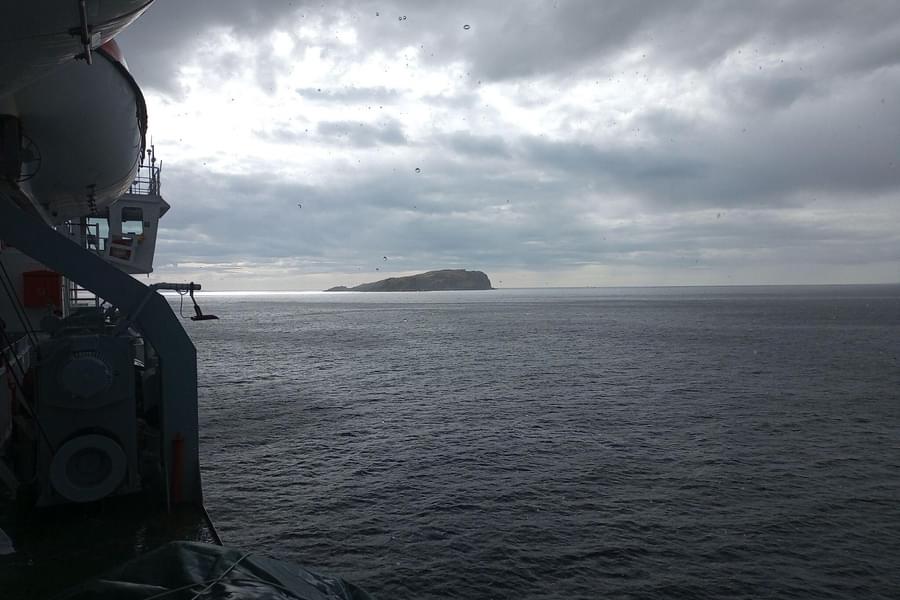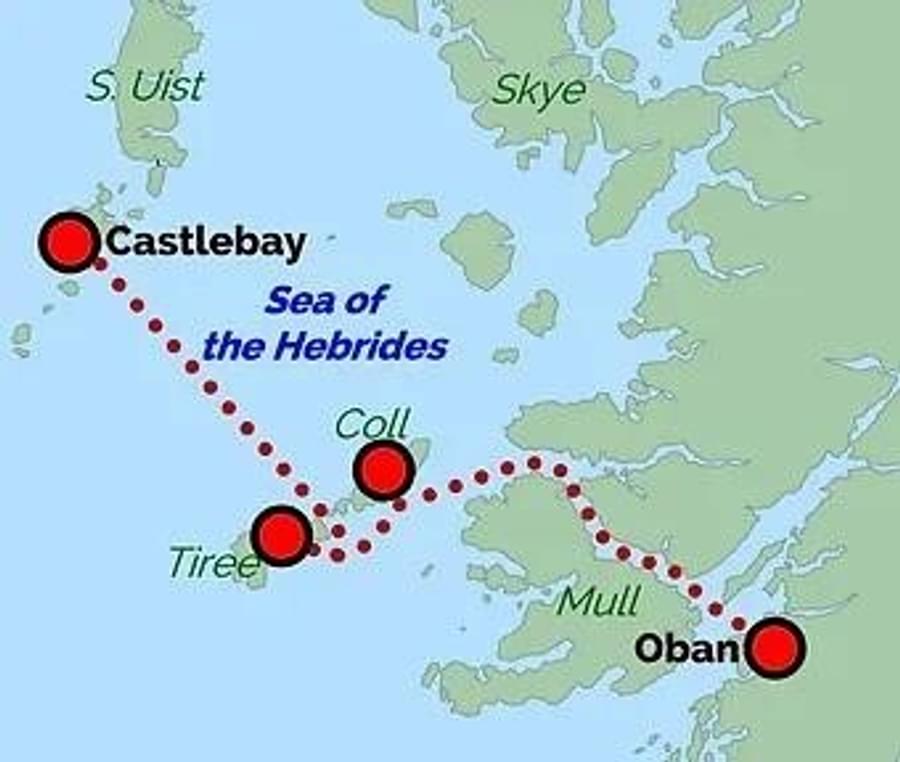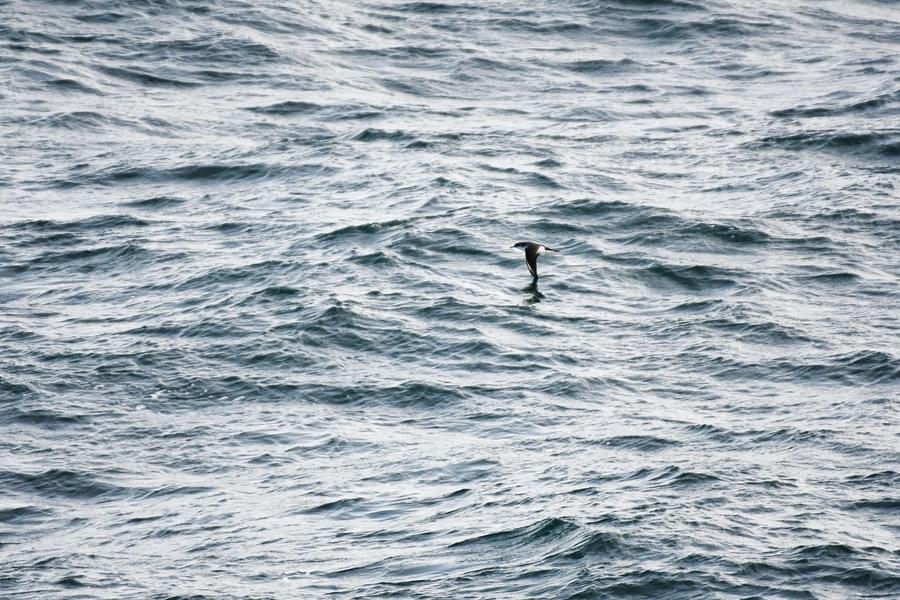With spring having sprung and the last remnants of snow grasping onto the peaks of the hills around Oban, it was time to start the season on the water as an Ocean Conservationist with Caledonian Macbrayne. My first endeavour would take me to the Isle of Colonsay, a small island around 30 miles southwest of Oban. The journey takes a little over two hours as the boat passes down the sound of Kerrera and beyond, with the mainland to your left and the hills of Mull to the right. There was barely a breath of wind as we set out, leaving the ocean a flat surface, reflecting the hills surrounding us. These conditions are ideal for spotting whales, dolphins and porpoises as there is no distraction to the eye, and there are very few places for the animals to hide.
It wasn’t long before we took advantage of the calmness, viewing a porpoise feeding off the coast of the Slate Isles. The weather didn’t hold out, unfortunately, as the familiar feel of light rain began to fall, obscuring sight and making the deck a slightly less comfortable place to be. Luckily, the shower was over after a very brief time, and we approached Scalasaig, the main port on the island, in improved conditions.

We dropped off the current passengers and began the return journey with several great northern divers flanking the boat. Due to strong tidal currents in the area, the ship changes route for the return journey, moving up along the coast of Mull. Although the conditions remained favourable, there wasn’t much to be seen until we neared Duart Castle on the eastern point of Mull, where 2 Porpoises hurriedly swam along the shoreline. We finally turned back towards Oban, with light beginning to fade, and the first day on the water was over. 3 cetaceans were spotted fueling optimism for the coming season.
My next trip would take me to Craignure on Mull. This crossing serves as the main port of entry to the island, although Calmac does offer services from the Morvern and Ardnamurchan peninsula, and takes around an hour.
I was to do this several times throughout the day, and with showers and wind conspiring to make conditions unpleasant for viewing, I wasn't hopeful of many sightings throughout the day, although there is always a chance. Unfortunately,I was proven right as the one glimpse of hope came in the form of a ten-minute spell of sunshine creating a fantastic arching rainbow as we entered Craignure
Unfortunately, the weather returned to form soon after, and the day was largely spent wet, with very little in the way of sightings.
My final trip of the week would take me to Coll and Tiree, two fantastic islands to the west of Mull. The journey to Coll takes around three hours, with Tiree another hour on top of that. They are home to some of Scotland's most fantastic beaches and are well known for the vast array of wildlife that can be found on and around them.

The conditions were, again, far from perfect, with strong headwinds bringing in a bitter, early morning coldness on deck, despite mostly clear skies. The journey takes you through the raging tidal rush off of Lismore and into the sound of Mull, sandwiched between two 65 million-year-old super volcanoes that formed the hills in the area. Onwards past the coloured houses of Tobermory (otherwise known as Balamory for those with kids) and out into the sea of the Hebrides past Ardnamurchan lighthouse.
With winds still howling and creating rough seas, it was going to be tricky to spot any of the cetaceans I was looking for, however, there were positive signs in the form of numerous seabirds piloting their way through the rough conditions with ease. One of my favourite birds found on the water is the manx shearwater, which return from a long migration to South America to roost in their hundreds of thousands every year on the Isle of Rhum. They return to the area to enjoy the bounty of feeding offered by the Hebridean waters and are often spotted feeding amongst the minke whales we enjoy in the area.

Turning back from Tiree, the strong winds we had been ploughing into on the way were now behind us, giving the feeling that there was very little wind at all. Unfortunately, with the sea still stirring into white crests and large swells, the feeling didn’t translate to better viewing conditions. It did, however, bring some more people out on deck to enjoy the sun, which was now beating down in full force and with more eyes on the water, you are always more likely to see something. Sadly, even with more eyes on the water, there was still very little spotted on the passage back. We once again approached the sound of Mull and made our way back, enjoying the warm air that had finally arrived in the area after many months of severe cold. As we arrived back in Oban, I spoke with one of the guests about how, even without a sighting, a day out on the water in the Hebrides is never wasted, and despite some disappointment, I would still go home having enjoyed the trip and excited for the summer ahead.



